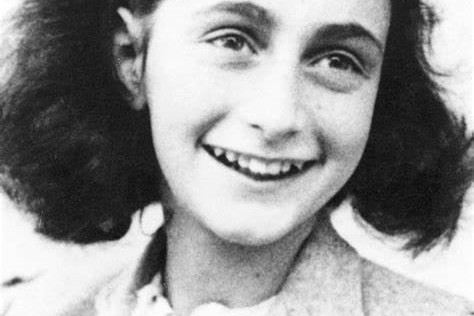
posted 4th May 2024
The story of Anne Frank has an emotional appeal. A life cut cruelly short by a mass murderer from the Austrian town of Linz. Her house is one of the most potent attractions that Amsterdam has to offer. A stark reminder of how this city was occupied by forces alien to its values. The life of Anne Frank has come to define a dark memory in the city’s past. A constant warning of the way that good times can very rapidly turn to bad. A city bought low by murderous intent.
Anne Frank was born in Frankfurt in 1929 to Otto and Edith Frank. Her Jewish family were literary by nature and Anne, along with her elder sister Margot, were surrounded by books from a young age. In 1933 Anne’s life changed forever. Adolf Hitler became Chancellor of Germany in January. Hitler’s loathing of Jews was an established fact with entire sections in his book ‘Mein Kampf’ dedicated to his reasons for his determination that Jews had no place in German society. The Franks saw the writing on the wall. Hitler’s Germany would have no place for them. Their future was in Amsterdam.
The Frank family arrived in the Netherlands as refugees and headed for Amsterdam. Amsterdam had a thriving Jewish community that was well established, and the family could use their ethnic and religious affiliations to build a new life far away from Hitler and the Nazis. Anne was only four when she first saw the canals and the cobbled streets of the capital city of the Netherlands. Her young eyes must’ve been excited at her new surroundings. Too young to understand why her family had fled to the city, she could look forward to a childhood with happy memories surrounded by a lively Dutch culture.
In 1940 the Frank family would again have their lives take a sharp turn to the south. Their human identity again bought to the forefront by the Nazi regime. The Second World War in Europe had broken out the previous year when Hitler gambled once to often in pursuit of German expansion. When German troops invaded Poland from the west and Soviet forces invaded from the east, Britain and France declared war on Germany. Europe’s Jews, gypsies, homosexuals and the intelligencer found themselves caught between two great tyrannies. When the German army occupied the Netherlands strict anti-Jewish laws were introduced and Anne had to change schools. Social segregation between races was now going to become the new norm for the Franks. On her thirteenth birthday Anne received an autograph book. It was this book that would make Anne’s name known all over the world.
By the summer of 1942 the racial and social enemies of National Socialism started to be deported from the Netherlands. Amsterdam’s Jews were in imminent danger of being sent to the east. Rumours were rife about what was happening in the east. Word was circulating that those sent to the camps were never being seen again. The Frank family decided to go into hiding rather than succumb to their fate. The family moved into the third story of Otto Franks office on the Prinsengracht canal. Some of Otto Franks most trusted employees were going to bring the family food and keep them hidden from the deportations. It was here that Anne started to keep her diary. In the words that she wrote Anne speaks to the reader about her relationships with her family. The tensions. The fears. The intricate web of human relationships. The Franks had successfully evaded capture for two years but, on the night of the 4th of August 1944, their luck ran out. The secret compartment where they’d been hiding was raided by the police. It was alleged that a younger sister of one of the Franks associates had betrayed them to the authorities.
The Franks entered hell after their capture. The notorious Nazi concentration camp, Auschwitz, was now their new home. Upon arrival, male and female prisoners were separated. After the family was separated along gender lines Otto never saw his wife or his daughters again. By late 1944 Anne and Margot were selected to be transported to Bergen-Belsen concentration camp in Germany. Edith was seriously ill by this time and died in Auschwitz. By the time the sisters arrived at Bergen-Belsen sickness was rife. Typhus had broken out in the barracks with conditions making survival an improbability. Anne died a day after Margot. The two sisters who’d come from Berlin to Amsterdam and onto Auschwitz couldn’t survive the horrors of the Nazi murder machine. They’d survived on their wits for many years and months, but the harsh realities of Bergen-Belsen defeated the two young women.
When Anne died we lost a remarkable writer. One whose diary has informed the world of the horrors of the holocaust. The persecution of those the Nazi’s deemed to be racial enemies were humanised by her powerful words. Anne Franks House is now a major tourist attraction in Amsterdam. Groups of school children visit her hide out to learn about her story. Her diary is world famous with millions of copies in circulation. Anne’s life has been dramatized on the big and the small screens. The life of Anne Frank is one of tragedy. Tragedy at losing a talented young writer who never had the chance to fulfil her ability. But in that tragedy, she humanised one of histories greatest crimes.




